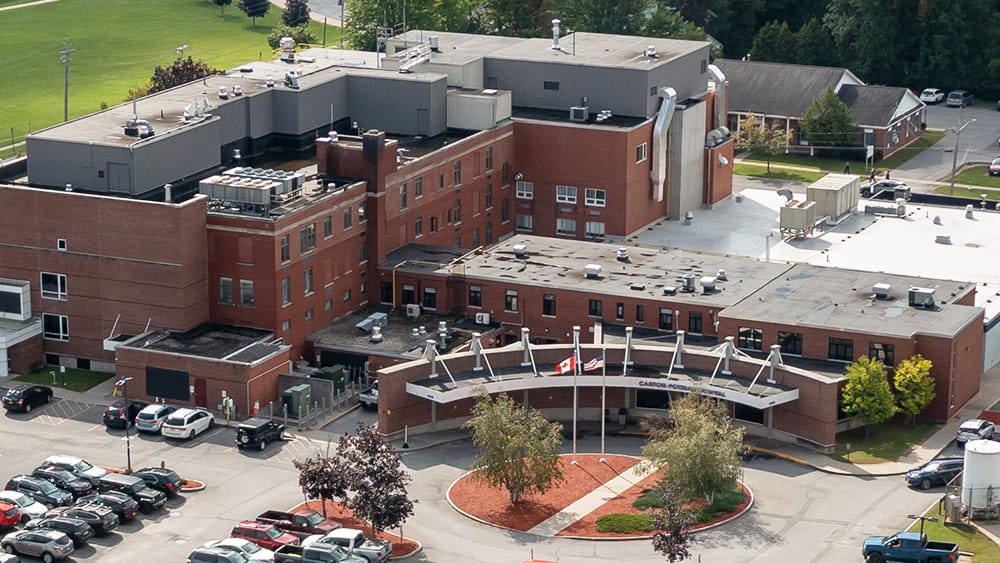
Over the last 20 months, the COVID-19 pandemic has shown the struggles and triumphs of healthcare workers. From large cities to small villages, Rochester Regional Health is working to give people the best possible care where they live.
Eyal Kedar, MD, Regional Medical Director of Clinical and Rural Health Research, St. Lawrence Health – an affiliate of Rochester Regional Health – is one of the providers who works with COVID-19 patients in rural communities.
From the first days of the COVID-19 pandemic, providers have been working to keep their communities safe. With 86 percent of the land in New York being rural, 18 percent of the state’s residents live in rural areas.
For providers working to serve the health needs of residents living in these communities, it can be tough with access to fewer resources than larger healthcare settings such as Rochester General Hospital.
Hospitals and outpatient health centers deal with a lack of ICUs to care for more critically ill patients. Poverty levels are higher in rural and remote areas, which often means people living in those areas are in poorer overall health. These people also have a higher rate of co-morbidities, which places them at a higher risk of COVID-19.
On a logistical level, these hospitals also experience lower staffing levels – meaning nurses or doctors who call out sick may not have someone to cover for them. Smaller supply chains give these hospitals less access to the latest healthcare equipment or other innovations.
The COVID-19 pandemic is testing the limits of global healthcare, especially in rural and remote areas. A group of providers at St. Lawrence Health came together at the start of the pandemic in 2020 to determine how they could work together to treat COVID-19 patients in their region.
In their published research article COVID-19 in a rural health system in New York – case series and an approach to management, the group discussed how they cared for COVID-19 patients in their healthcare system and what steps other rural and remote health systems could take to design similar pandemic response systems in the future.
Before the pandemic began, St. Lawrence Health made it a priority to recruit subspecialists to allow for more diverse treatment options. Some of these subspecialists included an infectious disease physician, a team of physician assistants in infectious disease and hospital medicine, and a rheumatologist with experience treating interstitial lung disease.
With three hospitals in the St. Lawrence Health system, hospital leadership used a hub-and-spoke system to re-route COVID-19 patients from its two smaller hospitals to its largest hospital: Canton-Potsdam Hospital.
At the same time, they created a clinical team to oversee procedures, discuss the latest COVID-19 treatment and research developments, and medication availability for local COVID-19 patients.
Of the 20 COVID-19 patients studied for the research article (a case series of the very first wave of infections in St. Lawrence Health which culminated at the start of the first of several inpatient COVID-19 trials at Canton Potsdam Hospital), only one died of the virus.
Of the hospitals in the Rochester Regional Health System, six operate in rural settings: Newark-Wayne Community Hospital, Clifton Springs Community Hospital, United Memorial Medical Center in Batavia, Canton-Potsdam Hospital, Massena Hospital, and Gouverneur Hospital.
One of the challenges of these hospitals is a limited surge capacity. Having a backup COVID-19 consultation team at a more robust regional academic center would allow healthcare providers at smaller hospitals to have knowledge of the latest treatments and research.
In turn, these smaller hub-and-spoke hospital networks can serve as environments where larger regional academic centers can partner with providers for emerging clinical trials.
St. Lawrence Health has been able to flourish with a combined inpatient-outpatient COVID-19 clinical trials program. The health system has participated in three very high profile COVID-19 studies: ACTIV1, ACTIV2, and Empacta.
“With the COVID-19 pandemic now raging again in our region, it’s my hope there will be more attention and research into eliminating the many longstanding health and healthcare disparities between rural and non-rural communities in the U.S.,” said Eyal Kedar, MD, Regional Medical Director of Clinical and Rural Health Research at St. Lawrence Health .
